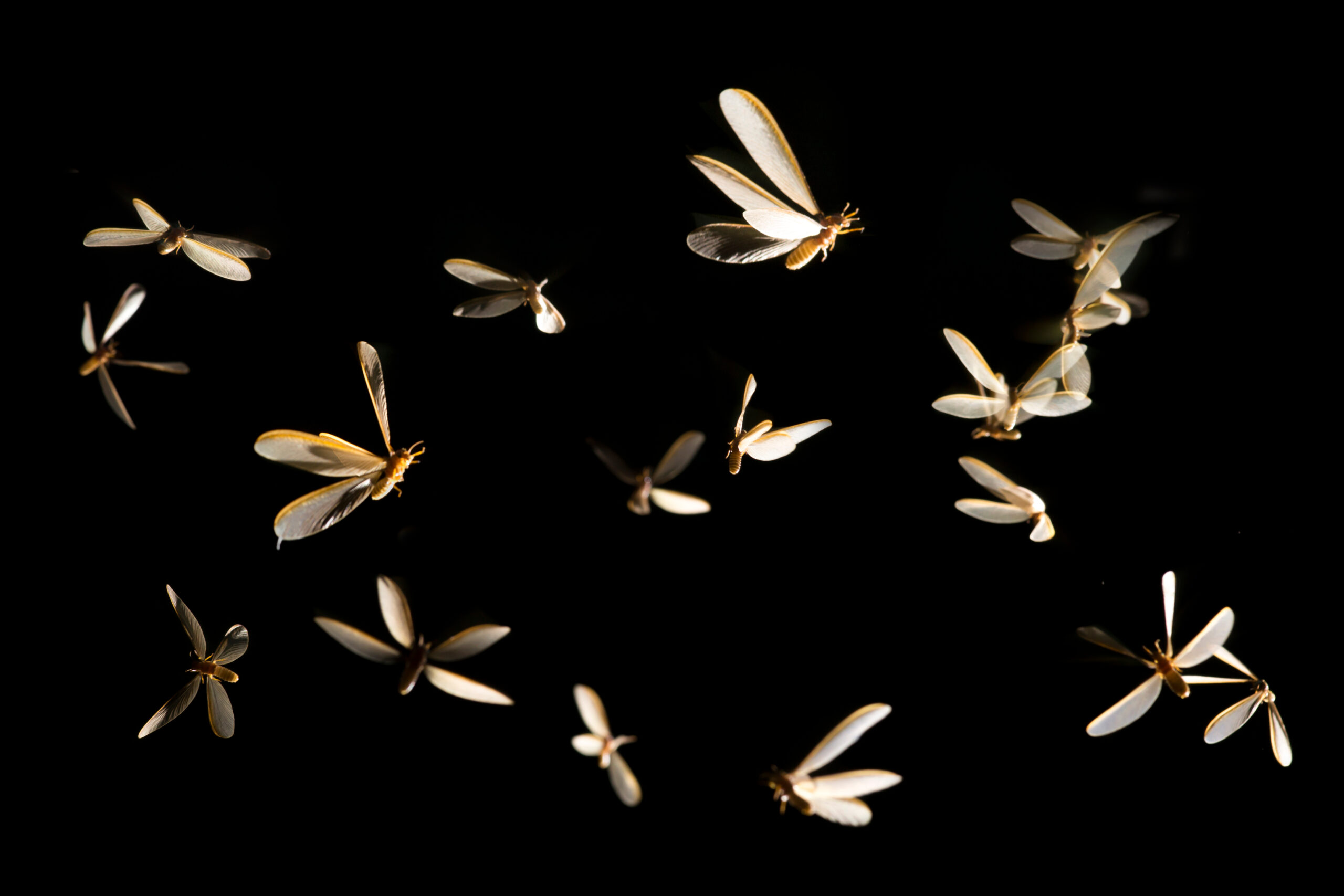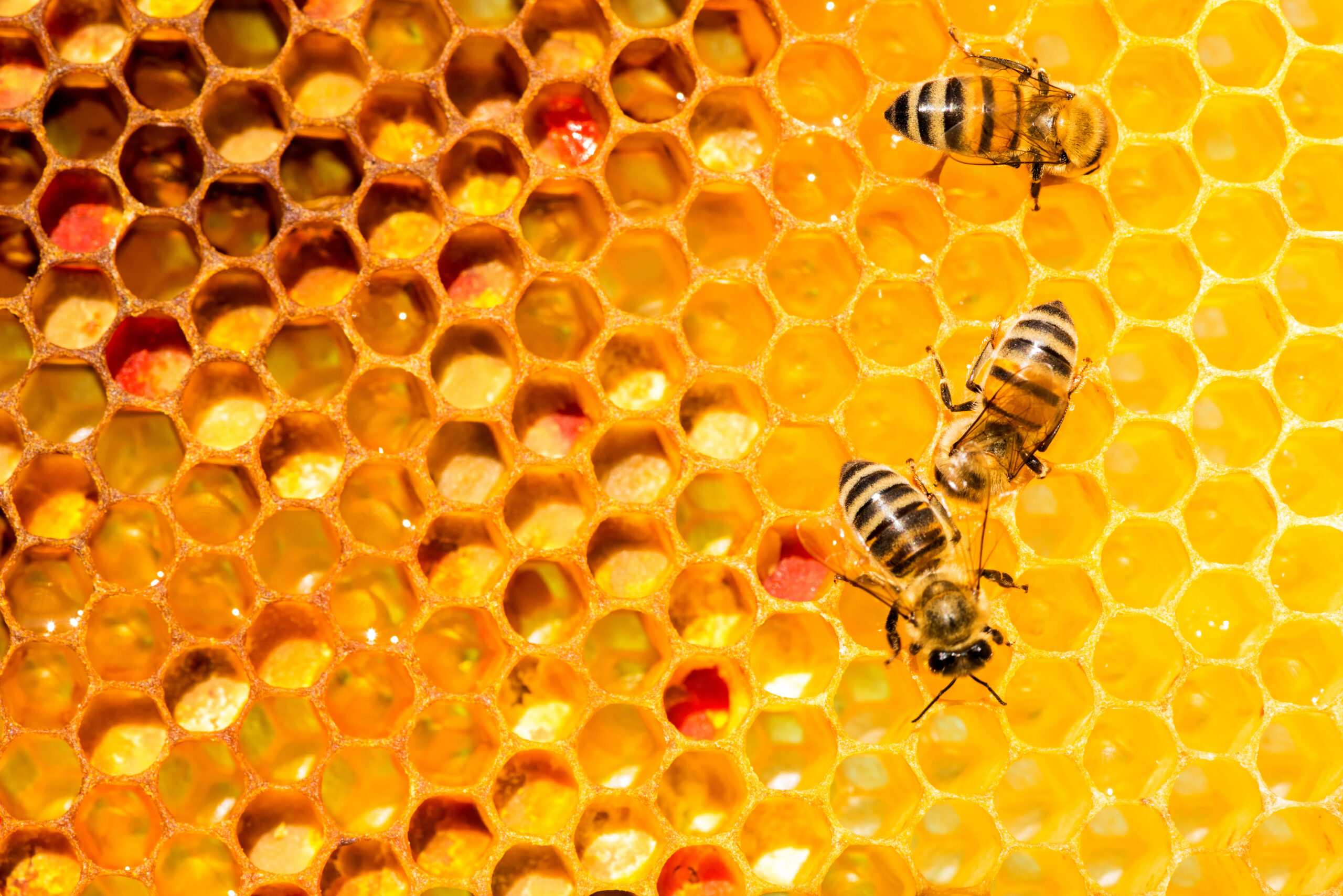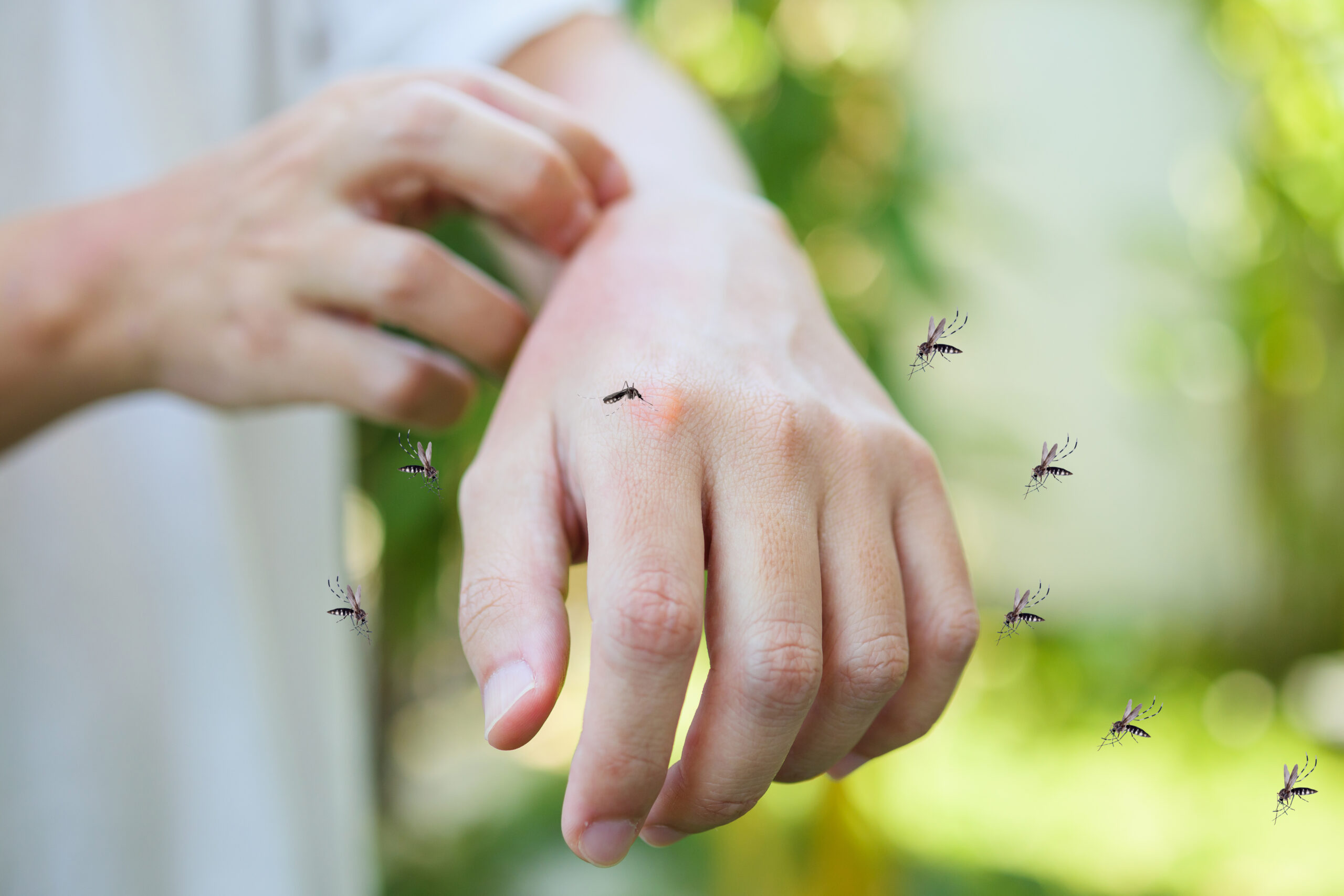Earworm Worthy: A Brief Analysis of 5 Pest-Themed Songs
Earworm Worthy: A Brief Analysis of 5 Pest-Themed Songs
Song lyrics encompass every aspect of the human experience, from falling in love to moving away to feeling betrayed. There are plenty of ways to explore these storylines and create memorable lines that listeners will remember long after the song ends. Metaphors, similes, and lists are a few of the most common ways that songwriters achieve this. The inspiration for these can come from the most unlikely of places. Case in point: pests! There are quite a few songs that mention insects, some of which are the main focus of the tune. Let’s take a look at five songs that are both titled after insects and obvious in their focus on the featured pests.
“Bugs” — Lonesome Rhodes

One of the more general titles of the group, “Bugs” is a sentimental song about wanting to spend time with a person by going for a drive. The narrator says they want to “point out airplanes in the sky” and “wonder how a bug can fly” with their special person. The latter task is one of life’s greatest questions (often asked by curious children) that can be explained with science. The basic reason why insects can fly is because they are both small and have fully-developed wings, so they are able to fly far compared to their size.
The specifics vary with each species, but most insects have one or two pairs of wings that can carry their body weight. Insects have muscles that indirectly move its wings by changing its thorax shape during the flight. These wings have chitin — a major component of an insect’s exoskeleton — and veins to supply vitals to the wings. Every species has a different flight pattern and speed, which can also vary with the actual insect’s age and health. This is why we see some insects dart around our yards with super speed (yellow jackets) and others stagger along at a lethargic pace (cluster flies).
“Bees” — Animal Collective

This is one instance where the insects are likely being used for a metaphor but still retain their realistic characteristics. The narrator repeatedly asks if the other person in the conversation needs “the bees” many times after saying that they both take their time. The bees could represent feelings, which would mean the narrator is asking if the person needs passionate feelings in the relationship. Metaphors aside, the bees in the song share some interesting characteristics with real bees. Keeping the same line formatting, the narrator describes the bees as being (in order) “sudden,” “violent,” “scary,” and “wild.” There are also four ways that the bees came to the narrator: “flying,” “sly,” “wide,” and “crying.”
It’s interesting to think of these words in the context of feelings, but we’re focusing on the literal insect that the song is named after. In general, bees are relatively docile compared to other stinging insects, like hornets and wasps. They may buzz over to us when we spend time outside in warmer weather, but it’s usually just because they’re trying to determine if we’re a flower! Bees are eusocial insects that live in colonies descended from the same queen, and spend their days scavenging for nectar and pollen to sustain everyone. They won’t sting simply because they feel like it, but these insects are defensive of their home and will attack anyone who disturbs it.
“Mosquito” — Yeah Yeah Yeahs

Another song focused on a specific insect, this tune is all about the bloodsucking pest that bugs (literally) us every summer. Mosquitoes are prominent across the country and are most active in the heat and humidity, which would make this song a great summer melody. The insects in “Mosquito” can be taken literally since the narrator spends the song describing the frustration and stress of being near mosquitoes. The first verse starts with listing the four acts that mosquitoes do: “sing,” “cry,” “live,” and “die.” Most of the song then focuses on the pest’s bloodthirsty ways and how they drink “whatever’s left.” One of the most ominous lines is also true of the real pest, since “They can see you but you can’t see them.”
Female mosquitoes are responsible for the itchy bites they give us because they only start drinking blood when they need protein for their eggs. Mosquitoes have a variety of techniques that they use to find a new food source, including detecting our carbon dioxide output, sweat, and body heat. They have infrared vision that makes it easy to differentiate warm-blooded mammals from cold-blooded creatures. As for the “cry” that the song references, a mosquito’s infamous whine is just the sound of their wings beating together. These speedy wings beat at a rate of 500 times per second, resulting in a whine sound that attracts male mosquitoes to the scene.
“Bug” — Lily Seabird

There’s nothing like songs about feeling unimportant or too small to matter, as it is painfully relatable in those midnight moments that we spend in reflection from time to time. “Bug” is essentially about feeling like “a bug underneath your shoe” and not wanting to be squished despite “feeling small like nothing at all.” It is true that we often deal with bugs in our home by squishing them with a shoe or magazine, but insects are so small that we step on them everyday without realizing.
Some bugs are best left un-squished for a number of reasons. Butterflies and honeybees pollinate our plants, and the general ecosystem would suffer without them. Bed bugs shouldn’t be squished for an entirely different (albeit disgusting) reason. When they are full of blood, these bugs can leave stains on fabrics and furniture if they are squished. Conversely, some insects need to be squished in order to benefit humanity. When the spotted lanternfly became a major pest in 2022, experts were advising the public to squish every one that they saw. These pests suck the vital juices out of plants and trees, so it’s easy to see why squishing the spotted lanternfly is a greatly beneficial act.
“Love Is Like a Butterfly” — Dolly Parton

The title of this song is a great example of a simile. If you can recall some of your high school English classes (easier said than done), you may remember that a simile is a comparison using the word “like” or “as.” This particular simile is a lovely sentiment about how love feels like a colorful, shimmery, delicate butterfly when it is true. The narrator pays homage to the beloved insect by likening love to its “satin” and “soft” wings, as well as mentioning how love is a “rare and gentle thing.” If any insect were to encapsulate this graceful feeling, it would be the butterfly.
Butterfly wings are comprised of veins and membranes that are the reason why they are so fragile. The structural scales we can see in the sunlight are formed in the pupal stage when the caterpillar forms its cocoon. Each species has differing colors and patterns on the wings that make them unique. Butterflies are usually seen fluttering around gardens and flower fields in warm weather, when they can find nectar in the blooming flowers. One such flower is the daffodil, which is mentioned in this song: “Together we belong like daffodils and butterflies.” Butterflies love this flower because it blooms during their active season and produces a lovely scent that is irresistible to the insect when paired with the flower’s golden hue.
Efficient Pest Control Is Music To Our Ears
At Green Pest Services, we understand the importance of a pest-free home. After all, this space is where we should feel the most relaxed and peaceful, not stressed and frustrated because some pests decided to invade! Our team begins every service with a complete inspection of the property in order to determine the species involved and assess the areas of pest activity. These findings then help us create a customized treatment plan that will target the root of each specific pest problem and prevent the creepy-crawlies from returning. Since all of our products are environmentally-friendly, the stress of harmful chemicals in your home doesn’t exist when you choose Green. We look forward to keeping your home pest-free, so contact us today to schedule your initial appointment with our knowledgable team!
***Disclaimer: Section 107 of the United States Copyright Act recognizes “fair use” copywriter content as such: “Notwithstanding the provisions of sections 106 and 106A, the fair use of a copyrighted work, including such use by reproduction in copies or phono-records or by any other means specified by that section, for proposes such as criticism, comment, news reporting, teaching, scholarship, or research, is not an infringement of copyright.” This blog post may contain certain copyrighted works and characters that were not specifically authorized to be used by the copyrighted holder(s), however, the content on this post qualifies as “commentary” on the copyrighted works under the “fair use” doctrine of the U.S. Copyright Act and is thereby protected by federal law. Furthermore, we do not claim any ownership or creative rights of any characters on this list, and all rights outside of the fair use doctrine belong to the respective owner(s).
Citations
Animal Collective. (2005). “Bees.” Genius. Retrieved January 8, 2024, from https://genius.com/Animal-collective-bees-lyrics
Bee behavior and characteristics. (n.d.). Terminix. Retrieved January 9, 2024, from https://www.terminix.com/other/bees/behavior/
Insect flight. (1999, May). Smithsonian Institute. Retrieved January 9, 2024, from https://www.si.edu/spotlight/buginfo/insect-flight
Kish, S. (2021, May 31). Why do mosquitoes buzz in our ears?. Live Science. Available at https://www.livescience.com/why-mosquitoes-buzz-near-ear.html (Accessed on January 9, 2024).
Lonesome Rhodes. (2019). “Bugs.” Genius. Retrieved January 8, 2024, from https://genius.com/Lonesome-rhodes-bugs-lyrics
Parikian, L. (2023, July 28). How do insects fly? The miracles of insect flight revealed. Discover Wildlife. Available at https://www.discoverwildlife.com/animal-facts/insects-invertebrates/how-do-insects-fly (Accessed on January 9, 2024).
Parton, D. (1974). “Love Is Like a Butterfly.” Genius. Retrieved January 8, 2024, from https://genius.com/Dolly-parton-love-is-like-a-butterfly-lyrics
Seabird, L. (2021). “Bug.” Genius. Retrieved January 8, 2024, from https://genius.com/Lily-seabird-bug-lyrics
Squish, squash, stomp: It’s OK to kill this beautiful but invasive insect, experts say. (2022, August 26). CBS News Sacramento. Retrieved January 9, 2024, from https://www.cbsnews.com/sacramento/news/squish-squash-stomp-its-ok-to-kill-this-beautiful-but-invasive-insect-experts-say/
Yeah Yeah Yeahs. (2013). “Mosquito.” Genius. Retrieved January 8, 2024, from https://genius.com/Yeah-yeah-yeahs-mosquito-lyrics
Zubek, A. (n.d.). Are daffofils good for pollinators? Two influencing factors. WhyFarmIt. Available at https://whyfarmit.com/daffodils-as-pollinators/ (Accessed January 9, 2024).
A Simple Guide to Preventing Stinging Pests
A Simple Guide to Preventing Stinging Pests A Simple Guide to Preventing Stinging Pests Summary: Stinging insects are more active in warm weather, [...]
These 10 Natural Mosquito Repellents Can Actually Help
These 10 Natural Mosquito Repellents Can Actually Help These 10 Natural Mosquito Repellents Can Actually Help Summary: Natural mosquito repellents are easier to [...]
How to Get Rid of Carpet Beetles
How to Get Rid of Carpet Beetles How to Get Rid of Carpet Beetles Summary: Carpet beetles are sneaky pests that don’t usually [...]
How Do Roaches Affect Asthma and Allergies?
How Do Roaches Affect Asthma and Allergies? How Do Roaches Affect Asthma and Allergies? Summary: It’s no secret that pests impact human health, [...]
These 5 Carnivorous Pests Might Surprise You!
These 5 Carnivorous Pests Might Surprise You! These 5 Carnivorous Pests Might Surprise You! Summary: There are many eco-friendly ways to prevent pests, [...]
The 5 Pet Pests That Really Bug Dogs and Cats
The 5 Pet Pests That Really Bug Dogs and Cats The 5 Pet Pests That Really Bug Dogs and Cats Summary: Dogs and [...]

